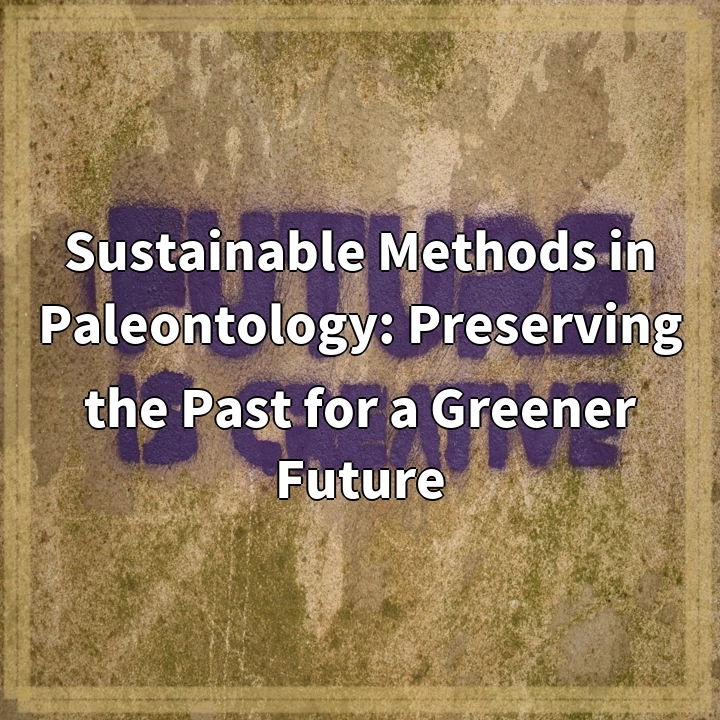
What it is:
Paleontology, the study of ancient life through the examination of fossils, plays a crucial role in understanding Earth’s history. However, traditional paleontological practices have often had negative impacts on the environment. In recent years, there has been a growing movement towards incorporating sustainable methods in paleontology to preserve the past while minimizing ecological footprints.
Real-world problems:
1. Fossil collection and extraction: Traditional fossil collection techniques, such as excavation and quarrying, can lead to habitat destruction, soil erosion, and disturbance to sensitive ecosystems. Additionally, the heavy machinery used in these processes contributes to carbon emissions and air pollution.
2. Chemical preservation: Preserving fossils often involves the use of toxic chemicals, such as adhesives and consolidants, which can have long-term environmental impacts. These chemicals can contaminate surrounding soil and water sources, posing risks to wildlife and local communities.
3. Waste management: Fossil preparation, which involves cleaning and stabilizing specimens, generates significant waste, including packaging materials, solvents, and discarded rock fragments. Proper waste management is crucial to minimize the ecological footprint of paleontological activities.
4. Travel and transportation: Paleontologists often need to travel long distances to study and collect fossils, resulting in significant carbon emissions from air travel and transportation of heavy equipment. This contributes to climate change and environmental degradation.
5. Cultural heritage preservation: Many fossil-rich sites hold cultural and archaeological significance for local communities. Unsustainable paleontological practices, such as looting or inadequate preservation measures, can lead to the loss of cultural heritage and disrupt community relationships with their ancestral lands.
Addressing these real-world problems requires a shift towards adopting sustainable methods in paleontology. By prioritizing environmental conservation and responsibility, researchers and institutions can ensure the preservation of the past for a greener future.

Solutions for Sustainable Methods in Paleontology:
1. Responsible fossil collection and extraction:
Implementing careful excavation techniques, such as using smaller-scale tools and hand excavation, can minimize habitat destruction and disturbance to ecosystems. Employing non-invasive methods like 3D scanning and photogrammetry can also reduce the need for physical removal of fossils.
2. Eco-friendly preservation methods:
Adopting alternative preservation techniques that utilize non-toxic or biodegradable materials can reduce the environmental impact. Researching and implementing sustainable options for consolidants and adhesives help preserve fossils while minimizing harm to surrounding environments.
3. Sustainable waste management:
Developing proper waste management protocols is essential for the disposal of materials generated during fossil preparation. This includes recycling packaging materials, properly treating and disposing of hazardous waste, and finding innovative ways to reuse or repurpose discarded rock fragments.
4. Minimizing travel-related emissions:
Paleontologists can strive to reduce their carbon footprint by prioritizing local collaborations and research opportunities. Utilizing online databases, sharing resources, and participating in virtual conferences can help minimize the need for extensive travel. When travel is necessary, opting for more sustainable transportation options, such as trains or electric vehicles, can help reduce emissions.
5. Collaboration with local communities:
Incorporating local knowledge and involving communities in paleontological research fosters mutual respect and cultural heritage preservation. Engaging in meaningful partnerships ensures that the exploration and excavation of fossils are conducted with the consent and participation of the local community.
By implementing these solutions, the field of paleontology can embrace sustainable practices in order to preserve the rich history of our planet while minimizing its ecological impact and contributing to a greener future.















